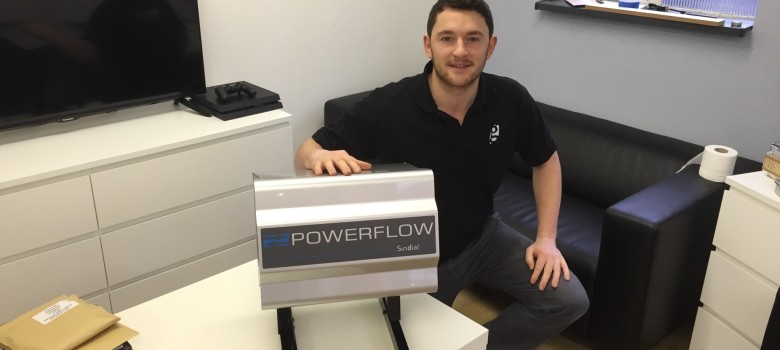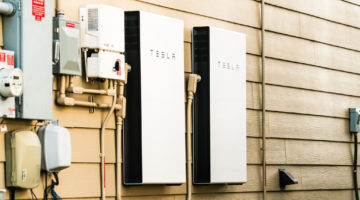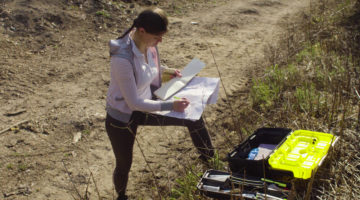
Powerflow Sundial is an innovative UK based solar photovoltaic (PV) battery storage manufacturer that has launched their product in the market for 2016. Why is it of any significance?
The market for solar PV systems and other self-generation systems has been hit by cuts in the government support on offer for the installations. Until recently the subsidies made these systems economically viable, and under the new regime fewer and fewer are being installed. For this reason, the likes of Samsung, LG and Tesla are trying to get battery storage systems installed alongside renewable technologies to help increase the self use of generated power by storing some electricity on-site. This allows for less expensive electricity being bought from the grid.
With the micro-generation Feed-in Tariff being cut, therefore reducing the demand for fully grid-tied systems, can the Sundial inject some life back into this market?
We spend the rest of this article talking through the merits of the Sundial system, using detailed reviews of their product specifications, carrying out interviews with the product designers and having first-hand demonstrations of the product capabilities.
How does a typical battery system work?
A battery is connected to the electricity system following the solar PV installation. When the sun is shining during the day, the battery is trickle charged with the excess electricity produced. Basically even if you are away from the house, you have background appliances like fridges, electrical appliances and so forth that are always on and using a certain amount of electricity.
In theory, the battery is trickle charged for the evening when the occupiers return home from work, ready to operate all their appliances. If the storage capability is large enough on the battery system, there should be enough back-up to power the appliances for the rest of the evening.
How does the Sundial system work?
As mentioned above, the traditional view of battery storage and release of energy works on the principle of storage during the day and release of energy during the evening, but the Powerflow Sundial is slightly different.
The principle of the Powerflow Sundial here is based on the seesaw – the system is designed to release and store electricity idiosyncratically to match the random peaks and troughs of energy consumption in the property. For example, at various points in the 24hour cycle there will be bursts of higher energy consumption versus other points in the day. The Powerflow system reacts to these changes and releases / stores energy accordingly to smooth out these peaks and troughs.
Therefore, the capture and release system reacts to the building’s demand profile rather than the time of day or night. The Powerflow Sundial can be used in the following scenarios:
- Homes – one unit may balance the way the household appliances draw power
- Businesses – several units may help with running the background infrastructure applications
- Utilities – a large number of units could be used improve the grid stability

Advantages of the Powerflow Sundial system
Instantaneous capture and release of energy when required
The energy release is responsive to the uniqueness of the building’s demand profile, therefore releasing the energy quickly and efficiently, allowing for maximum operative effectiveness. Since the product helps with the building’s demand profile it will also ultimately help with smoothing the peak and troughs of electricity demand in the local grid. Other solar PV battery systems won’t do this unfortunately, as they will only come on when the electricity is not being generated, which is outside daylight hours.
Compatible with existing solar PV systems
Sundial can also be used as a retrofit product as well as a tag-on to a standard solar PV installation. Therefore, if you are one of the 500,000 (or more) customers who has had solar PV already installed onto the property, then there’s no need to worry about complicated and expensive retrofit installation costs. Basically there is no requirement to replace the existing solar inverter/s, as the Sundial is connected to the AC side of the circuit – it is also G83/2 compliant. Note: inverters convert DC generated electricity to AC grid supplied electricity that is used in homes and businesses. Inverters are quite expensive, and since you are not touching them with this product you don’t have to worry about any hidden additional costs to replace them or any infringement of system warranties.
The Lithium Iron Phosphate Battery is long lasting
Sundial incorporates Lithium Iron Phosphate (LiFePO4) battery architecture, which is more suitable to storage applications than other Lithium Ion or lead acid alternatives. This is due to the longer lasting, increased cycle life, made possible by PowerFlows unique battery management design. The product has been endlessly tested in a controlled environment with careful consideration given to the way the battery discharges the energy, allowing it to last longer without losing its capacity. In addition, the product has been designed to allow for maximum heat dissipation to aid operating effectiveness and improve battery cell balancing. According to the manufacturer’s specification, the anticipated lifespan of the battery is 10 + years – this is roughly equivalent to 6000 cycles assuming 1 cycle per day. (A battery cycle is calculated when a battery undergoes a complete charge and discharge cycle to a specified depth of discharge or DOD).
Modular design for increased capacity
The battery size of each Sundial Module is 1.8kWh but has a usable capacity of 1.5kWh. Both the Sundial M (master unit) and the Sundial S (the slave or add on units) are designed with the same storage capabilities. Obviously the good news is, if you are not happy with only 1.5kWh of storage capacity, you can connect additional add on units to increase the total system size.
Batteries can be recycled by the manufacturer
In 10 to 15 years the battery will be at a reduced capacity and the system would benefit from a replacement battery. PowerFlow Energy will offer a battery replacement program and operate a full recycling service. With this exchange programme in place, the battery pack can be exchanged cost effectively for a new one.
Can the Powerflow Sundial system drive take-up in the energy storage market?
Since the demise of the grid-tied solar PV industry in the UK, the market is in need of energy storage systems that can be installed very easily and we hope it won’t add too much cost to the final consumer – both as a retrofit project or a completely new one. We see this product initially targeting the population of existing solar PV customers, who would like to be on the cutting edge of energy storage technology.
The Powerflow Sundial is fairly easy to install by a qualified electrician – estimated retail price £2,500 for the unit plus the cost of installation if it is a retrofit project. Although the installation cost is not estimated to be material to the cost of the unit, it is still there and could be a barrier for initial take-up by consumers wishing to have it installed. An even simpler plug-and-play option in future developments may actually help with additional product take-up.
Other battery systems like the Tesla play on the “capacity storage” advantages, whereas the Powerflow Sundial as discussed works on different principles. It is not meant to be bring self-sufficiency to a dwelling or utility when electricity is not being produced but rather to be used as a demand management regulator. For this reason the actual capacity of the battery is much smaller than a Tesla or other models that are on the market.
What happens if demand for the products really takes off?
If the demand for the products really takes off, then this is surely good news for the manufacturer and even better news (ultimately) for the consumer. With increased sales, you would have thought greater economies of scale and therefore lower unit prices for the final consumer. However, to replicate the production of these rather ‘complex’ products in large volumes is notoriously difficult, particularly when the technology is quite new – therefore it will be interesting to see how all the manufacturers of battery systems come to cope with these challenges in the future. Nevertheless we see the Powerflow (a British designed product) as a good solution to help kick-off this energy storage market.
Installing Battery Storage
Interested in having a battery storage system installed in your home? We have scoured the country for the best tradesmen, so that we can make sure we only recommend those we really trust.
If you would like us to find you a local installer to help install a battery storage system in your home, just fill in the form below and we will be in touch shortly!












Batteries are defintely the way forward. I think right now they are prohibitively expensive but potentially the arrival of the Tesla battery storage system will see to that and in 5 years they will be in millions of homes up and down the country. Exciting times and defintely where the market (and solar energy in particular) needs to move towards (espically when factor in things like the debacle at Hinkley C nuclear plant or lack of it!).
Great article, Its actually called the Powerflow Sundial with Powerflow being the manufacturer and Sundial the prodduct. We belive the market wants, No demands.! An AC coupled Solar PV battery storage solution ( rather than DC ) something that is relatively easy to install, does require disconnection of the existing Solar PV components This makes the POWERFLOW SUNDIAL range the best fit available so far for the retro install domestic battery market in the UK. Its really that simple..!
Assembled in UK with 1000% margin – cheap Chinese components and leaking batteries – another scam from Ian?!? hope this company will stay longer then previous three!!!